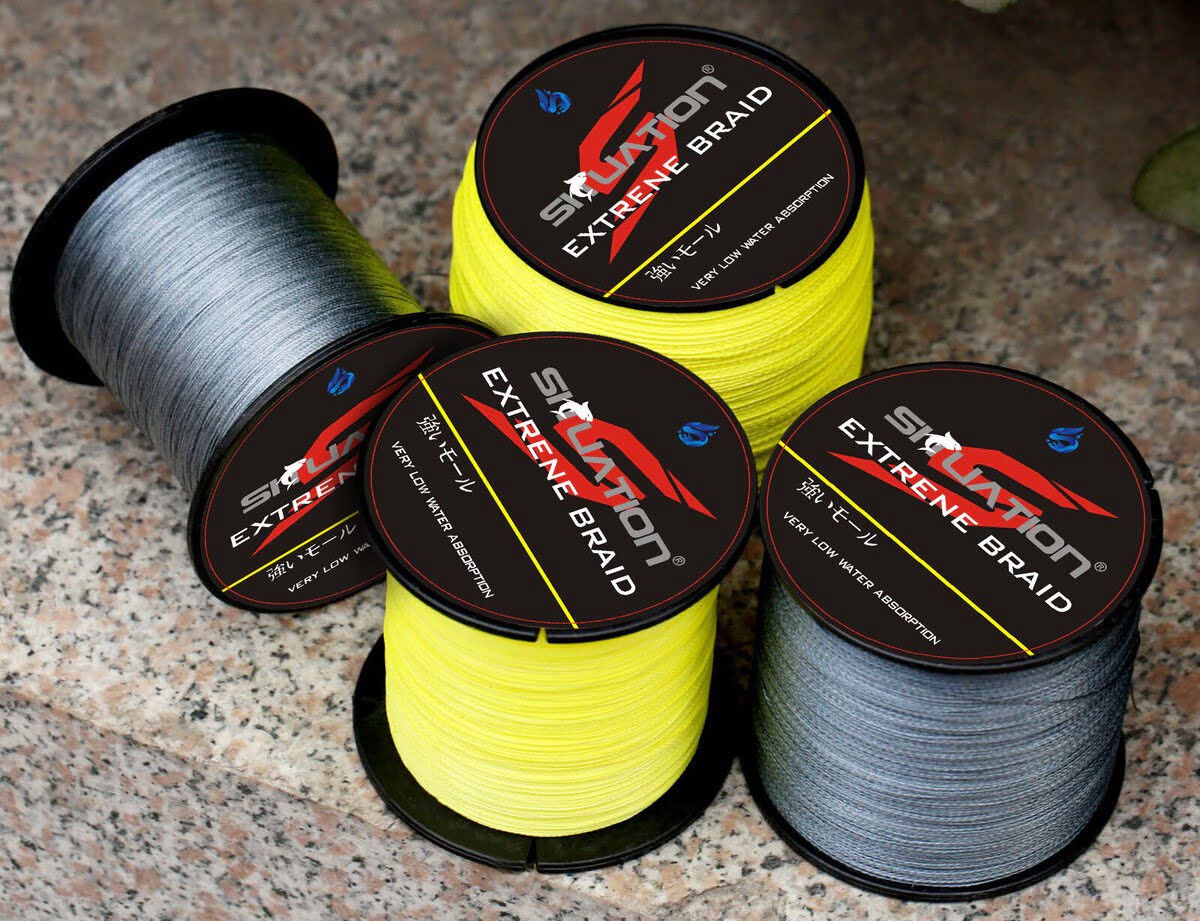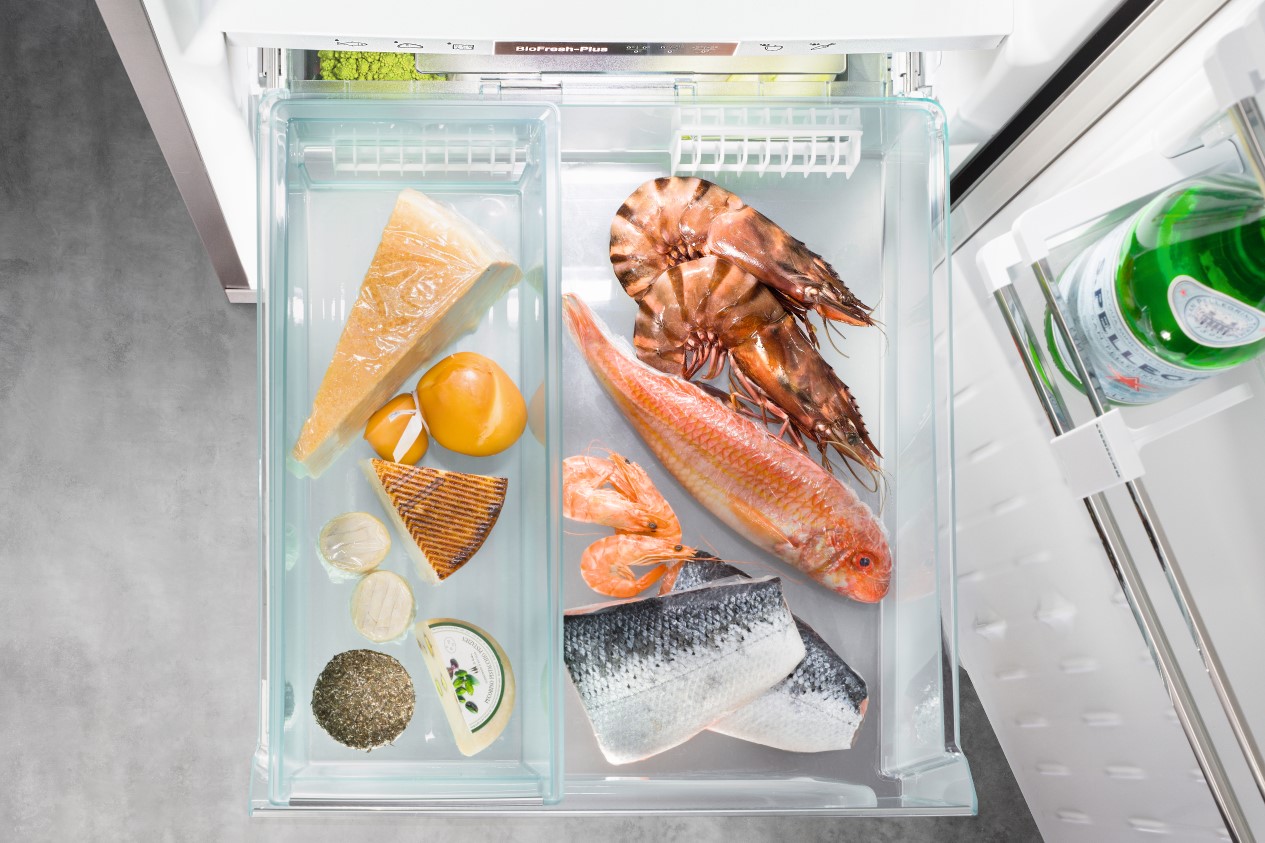

Articles
How To Store Fresh Caught Fish In Fridge
Modified: January 5, 2024
Learn the best articles tips for storing fresh caught fish in the fridge. Keep your fish fresh and delicious with these simple steps.
(Many of the links in this article redirect to a specific reviewed product. Your purchase of these products through affiliate links helps to generate commission for Storables.com, at no extra cost. Learn more)
Introduction
When it comes to storing fresh caught fish in the fridge, proper handling and storage techniques can make all the difference in preserving its quality and taste. Whether you’re an avid angler or simply enjoy a day of fishing as a recreational activity, knowing how to store your catch properly is essential to ensuring that it stays fresh and safe to consume.
In this article, we will guide you through the process of storing fresh caught fish in the fridge, step by step. From choosing the right container to monitoring the temperature, we’ll cover everything you need to know to keep your fish fresh and flavorful.
So grab your fishing gear and let’s dive into the world of proper fish storage!
Key Takeaways:
- Properly storing fresh caught fish in the fridge involves choosing the right container, cleaning the fish thoroughly, and monitoring the fridge temperature. These steps ensure optimal freshness and safety for delicious seafood meals.
- When using frozen fish, proper thawing techniques and careful handling are essential to maintain texture and flavor. Following these tips will result in delectable meals that rival those made with fresh fish.
Read more: How To Store Fresh Fish Fillets
Choosing the Right Container
When it comes to storing fresh caught fish in the fridge, selecting the right container is crucial in maintaining its quality and freshness. Here are some key factors to consider when choosing a container:
- Airtightness: Opt for a container that is airtight to prevent any odors from the fish contaminating other foods in the fridge. This will also help retain moisture, keeping the fish from drying out.
- Material: Use containers made of food-grade materials such as hard plastic, glass, or stainless steel. These materials are non-reactive and will not impart any unwanted flavors or chemicals to the fish.
- Size: Choose a container that is large enough to accommodate the fish without overcrowding. This will help prevent the fish from being squished and maintain its shape.
- Dividers: If you plan to store multiple fish fillets or pieces, consider using containers with dividers to separate and protect each piece individually. This will prevent them from sticking together or becoming damaged during storage.
By selecting the right container, you can ensure that your fresh caught fish remains intact and well-preserved while stored in the fridge.
Cleaning the Fish
Before storing fresh caught fish in the fridge, it is important to clean it properly to remove any impurities and ensure its freshness. Here’s how to clean the fish:
- Gut the fish: Using a sharp knife, make an incision from the anus to the throat, and remove the entrails. Be careful not to puncture any organs, as this can contaminate the meat.
- Remove scales: Run the back of a knife or a scaler along the skin of the fish, removing any scales. Work from the tail towards the head, making sure to cover the entire surface. Alternatively, you can use a spoon or a scaled glove for this purpose.
- Rinse with cold water: Thoroughly rinse the fish under cold running water to remove any remaining blood or debris. This will help maintain its freshness and clean off any potential contaminants.
- Pat dry: Use paper towels or a clean cloth to dry the fish thoroughly. Moisture can accelerate bacterial growth, so make sure the fish is completely dry before proceeding with storage.
By following these steps, you can ensure that your fresh caught fish is properly cleaned and ready for storage in the fridge.
Wrapping the Fish Properly
Properly wrapping the fish is crucial for protecting it from air exposure and preventing moisture loss. Here are some tips on how to wrap the fish properly:
- Use high-quality wrap: Choose a high-quality plastic wrap, aluminum foil, or freezer paper for wrapping the fish. These materials provide a good barrier against air and help maintain the freshness of the fish.
- Double wrap for extra protection: To further preserve the fish, consider double wrapping it. This adds an extra layer of protection, preventing any odors or flavors from permeating the fish.
- Wrap tightly: Ensure that the wrap is tightly sealed around the fish to prevent any air from entering. This will help maintain the fish’s texture, flavor, and freshness.
- Label and date: It’s a good practice to label and date the wrapped fish. This allows you to keep track of how long it has been stored in the fridge and helps organize your storage.
Remember to wrap each fish individually or separate fillets with layers of wrap to prevent them from sticking together during storage. Properly wrapped fish will retain its moisture and stay fresh for a longer period of time in the fridge.
Placing the Fish in the Fridge
Now that you have cleaned and wrapped the fish properly, it’s time to store it in the fridge. Follow these steps to ensure the fish is placed in the fridge correctly:
- Select a proper location: Choose a spot in the fridge that maintains a consistently cold temperature, preferably around 32°F to 38°F (0°C to 3°C). Avoid placing the fish near the door or in areas that experience temperature fluctuations.
- Keep it separate: Ideally, store the fish away from other food items to prevent cross-contamination. If possible, dedicate a specific area or shelf for storing the fish, away from fruits, vegetables, and other perishables.
- Avoid overcrowding: Allow enough space between the fish and other items in the fridge to allow for proper air circulation. Overcrowding can trap heat and cause the fish to spoil more quickly.
- Keep it in the coldest part: Place the wrapped fish in the coldest part of the fridge, which is usually at the back or the bottom. This will help maintain a consistently cold temperature and extend the shelf life of the fish.
- Close the fridge door gently: Be mindful when closing the fridge door to avoid any sudden movements or impact that could disturb the fish. This will help maintain its integrity and prevent any unnecessary damage.
By placing the fish in the fridge properly, you are ensuring that it remains at the optimal temperature and is protected from external factors that can affect its quality.
After catching fresh fish, make sure to clean and gut it thoroughly. Place the fish in an airtight container or resealable bag, then store it in the coldest part of the fridge, ideally at a temperature of 32-39°F (0-4°C). Use the fish within 1-2 days for the best quality.
Read more: How To Store Fresh Herbs In Fridge
Monitoring the Temperature
Monitoring the temperature of the fridge is essential to maintaining the freshness and safety of the stored fish. Here are some tips for monitoring the temperature effectively:
- Use a fridge thermometer: Invest in a reliable fridge thermometer to accurately monitor the temperature. Place it in the coldest part of the fridge where the fish is stored to get an accurate reading.
- Check regularly: Make it a habit to check the fridge temperature regularly, ideally once or twice a day. This will help you detect any fluctuations or potential issues that may impact the fish’s freshness.
- Adjust the temperature if needed: If the temperature of the fridge is too high or fluctuates frequently, adjust the temperature settings accordingly to maintain a consistent cold environment. Consult your refrigerator manual for instructions on adjusting the temperature settings.
- Keep the fridge closed: Avoid frequent opening of the fridge door, as this can cause temperature fluctuations. Minimize door openings and ensure the fridge door closes properly after each use.
- Follow storage guidelines: Different types of fish may have specific temperature requirements for optimal storage. Be sure to research and follow the recommended storage guidelines for the specific fish you are storing.
Monitoring the temperature of the fridge is crucial in ensuring that the fish stays fresh and safe to consume. By practicing regular temperature checks and making necessary adjustments, you can maintain the quality of the stored fish for longer periods of time.
Storing the Fish for Longer Periods
If you want to store fresh caught fish in the fridge for a longer period, follow these additional tips to ensure its longevity:
- Use the coldest temperature setting: Set your fridge to the coldest temperature setting to keep the fish as cold as possible. This helps slow down bacterial growth and preserves the freshness of the fish.
- Keep the fish whole: If possible, store the fish in its whole form rather than filleting it. The skin and scales act as a protective layer, helping to retain moisture and prevent the fish from drying out.
- Change the wrapping if necessary: If you notice any signs of freezer burn or discoloration on the existing wrapping, consider rewrapping the fish in fresh wrap. This helps maintain its quality and prevents any off-putting flavors.
- Rotate the fish: If you have multiple pieces of fish stored, rotate their positions in the fridge. This ensures that each piece receives equal exposure to the cold temperature and helps maintain consistency in freshness.
- Consume within recommended time: While storing fish in the fridge can extend its shelf life, it is still important to consume it within the recommended time frame. Check the guidelines for the specific type of fish to determine the optimal storage duration.
By implementing these practices, you can store fresh caught fish in the fridge for longer periods, ensuring that it maintains its freshness and quality until you’re ready to enjoy it.
Tips for Using Frozen Fish
If you have frozen fish and are planning to use it, here are some tips to ensure the best results:
- Thaw it properly: It is important to thaw frozen fish properly to retain its texture and flavor. The best way to thaw fish is by transferring it from the freezer to the refrigerator and allowing it to thaw slowly overnight. Avoid thawing fish at room temperature, as this can promote bacterial growth.
- Use it quickly: Once the fish is thawed, try to use it as soon as possible. Frozen fish has a shorter shelf life compared to fresh fish, so it is best to cook it within 24 hours of thawing to maintain its quality.
- Handle with care: Handle thawed fish gently to prevent it from breaking apart or losing its shape. Avoid excessive squeezing or pressing on the fish, as this can cause it to become mushy or lose its texture.
- Marinate for flavor: If you want to enhance the flavor of frozen fish, consider marinating it before cooking. Marinades can add moisture and flavor to the fish, making it more enjoyable to eat.
- Cook it properly: Cooking frozen fish is similar to cooking fresh fish. Whether you bake, grill, sauté, or fry it, make sure to follow the recommended cooking times and temperatures for the specific type of fish.
- Store leftovers carefully: If you have any leftover cooked fish, store it in an airtight container in the refrigerator. Consume the leftovers within a day or two to maintain their quality.
By following these tips, you can make the most out of your frozen fish and enjoy delicious meals that rival those made with fresh fish.
Conclusion
Properly storing fresh caught fish in the fridge is essential to maintain its quality, freshness, and safety. By following the steps outlined in this article, you can ensure that your fish remains in optimal condition until you’re ready to enjoy a delicious seafood meal.
Choosing the right container, cleaning the fish thoroughly, wrapping it properly, and placing it in the fridge are key steps in the storage process. Monitoring the temperature of the fridge and storing the fish for longer periods require additional attention to ensure optimal freshness.
Additionally, when using frozen fish, it is important to follow proper thawing techniques and handle it with care to maintain its texture and flavor. Taking these extra steps will result in a delectable meal made with frozen fish.
Remember to always follow the specific storage guidelines and recommended duration for the type of fish you are storing. By prioritizing proper fish storage techniques, you can enjoy the fruits of your fishing endeavors for longer periods without worrying about spoilage or compromised quality.
So, the next time you catch a fish, use the knowledge shared in this article to store it properly in the fridge. Whether you’re planning to cook it right away or freeze it for later use, the proper storage techniques will ensure that your fish remains fresh and tasty.
Frequently Asked Questions about How To Store Fresh Caught Fish In Fridge
Was this page helpful?
At Storables.com, we guarantee accurate and reliable information. Our content, validated by Expert Board Contributors, is crafted following stringent Editorial Policies. We're committed to providing you with well-researched, expert-backed insights for all your informational needs.















0 thoughts on “How To Store Fresh Caught Fish In Fridge”